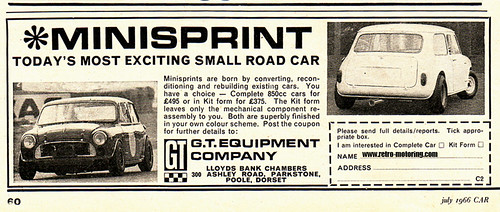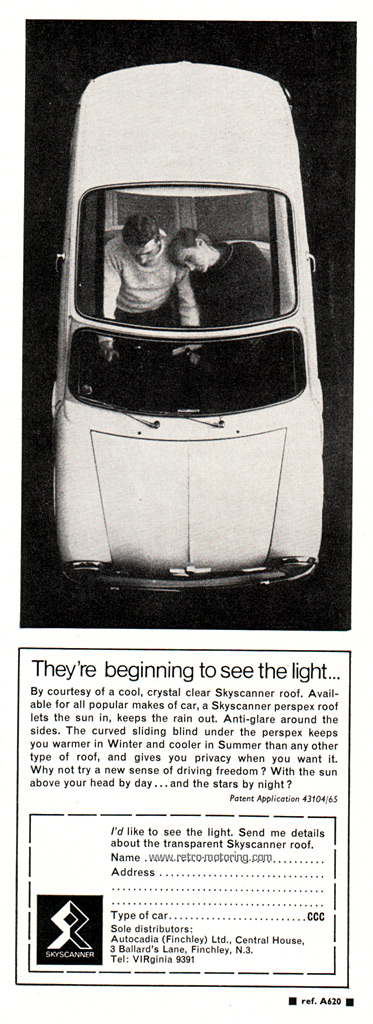

Back in the 1960s the Mini was king. They were everywhere and dominated just about every motor sport they were entered into. The neat way in which the front and rear drivetrain/suspension assemblies were self-contained in a pair of subframes lead to many different variants on the original theme and numerous kit-car derivatives.
One of the most interesting has to be the Minisprint. Geoff Thomas and Neville Trickett met by chance at a race meeting at Castle Combe in 1965 and the project took off from there. It was realised that by reducing the frontal area of the Mini there would be both weight loss and aerodynamic gain, leading to a more competitive car.
Rather than simply treat the basic Mini to a roof chop, the body work was also "sectioned", a horizontal slice taken out of the metalwork to further lower the stance. This was quite a tricky task, as it required extensive reworking of the metal and attention to the doors, bonnet and boot lid. The external seams and gutters were also removed, further smoothing out the shape.
The project wasn't intended to be a one-off, and both race car and road versions were developed. Initial interest was strong, and the car looked fantastic - at first glance just like a regular Mini but with clearly different proportions.


The Minisprint wasn't a race circuit success as by 1966, the year after the initial meeting of the two creators, just about every saloon car class had regulations dictating that the silhouette of the car had to remain similar to that of a standard production example - something that the Minisprint could not comply with. Plenty of road cars were sold though, and after some 85 Minisprints were built the project was sold to Stewart and Ardern - the world's largest distributors of Morris Cars at the time. The S&A Mini Sprint was first shown at the Racing Car Show, London Olympia, in 1967.

Thomas and Trickett moved on to other projects, Trickett created several kit car designs amongst other things, and Thomas went on to build up Rob Walker Garages, including the Formula 1 racing team, winners of the British Grand Prix in 1968.














































